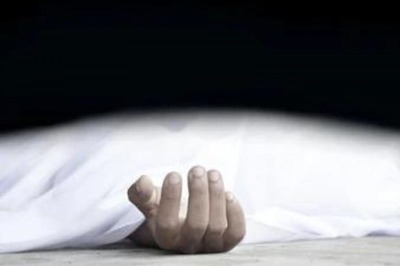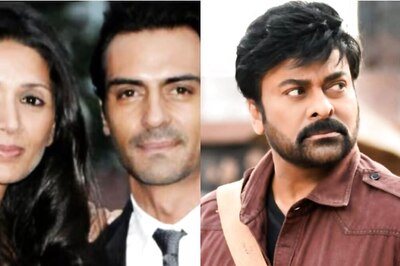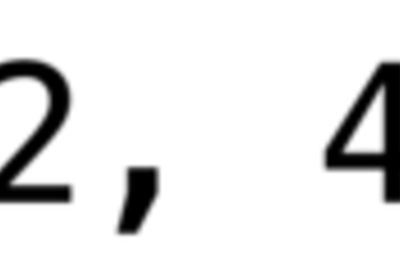
views
Senior Advocate Dushyant Dave, while arguing in favour of National Judicial Appointment Commission in the Supreme Court in October 2015, said about the image of the higher judiciary in the following words: “My lords should wear a burqa and roam in the court’s corridors to hear the way lawyers talk about the judges of court. You will get a first-hand account of the rotting justice delivery system.”
Indeed, strong words. That too spoken in the court itself! We shall come to it later. First the issues!
Life before the Collegium
After the Keshavanada Bharati and the A.D.M. Jabalpur Cases, High Courts and the Supreme Court came under immense pressure from the then ruling Congress government. The supersession of three senior-most Supreme Court judges and promotion of judges of her choice in various High Courts and the Supreme Court was only the beginning; Mrs Indira Gandhi resorted to punishing the judges whom she considered disobedient and inconvenient.
In the first step she resorted to the forced transfer of judges from one High Court to another and that too from one corner of the country to another. This mass transfer took place in 1976. These judges belonged to nine High Courts which had upheld the Fundamental Rights of persons detained during the Emergency. These judges were transferred from one corner of the country to another from their original high courts, without their consent and overriding their objections. Sixteen High Court judges, who were transferred, were not guilty of any misbehaviour or wrong-doing.
On the contrary they had performed their constitutional duties with utmost sincerity, and had only delivered judgements which were not to the liking of the government of the day. In his characteristic style, HM Seervai writes, “The sixteen judges were transferred not for doing anything wrong but for doing right to all manners of people according to the Constitution and the laws.” These judges had ruled that the detention of leaders like Morarji Desai, Atal Bihari Vajpeyee, LK Advani, Madhu Dandavate, Shyam Nandan Mishra and many others under the MISA during the Emergency was illegal.
The slur and insult was so much manifest in this act of transfer that two of the judges died of shock and heart attacks. The government was criticised for this act but of no avail. Even a very suave and polished Justice MC Chagla, Mrs Gandhi’s own former Education and Foreign Minister, was to describe this act of Mrs Gandhi as, “The most brutal and inglorious period of our history.” He further said that all this could happen just because Chief Justice of India (CJI) AN Ray was very weak. For everything, CJI Ray waited for directions from Mrs Gandhi or her colleagues.
Congress leaders and the government left no stones unturned to malign and demoralise the judges. A cabinet Minister of the Indira government had bracketed the entire judiciary with the Opposition parties just because some judges would not accept and do what the Congress Government wanted. In the Lok Sabha, Law and Justice Minister HR Gokhale (who himself was a judge in Bombay High Court before joining politics), and other leaders like KP Unnikrishnan, Chandrajeet Yadav, P Kumaramangalam and many others started talking about a ‘committed’ judiciary. HR Gokhale went as far as issuing a letter to each judge through the State Chief Ministers: “The Government of India thinks very highly of those ‘value-packed’ judges who never rule against the Government, and will consider favorably their promotion to the Supreme Court.”
Emergence of Collegium System
The appointments in the High Courts and Supreme Court have always been an issue between the judiciary and executive right from the time of Jawaharlal Nehru, not based on merit but on personal likes and dislikes. But what happened during Mrs Indira Gandhi’s rule, and especially during the Emergency, must have been a matter of great concern among the judges who valued and treasured the independence of the judiciary. Conduct of executives during the Emergency provided further impetus towards doing something to insulate higher judiciary from excessive interference of legislatures and the executives.
The roots of the Collegium system can be traced to the First Judges case, but it got a concrete shape from the Second and Third Judges Cases which were the Supreme Court Advocates on Account Case (judgement on 06.10.1993) and Government of India’s Petition for the Reconsideration of the Judgment of 6 October 1993 respectively. The Collegiums came into existence immediately after the judgement in the Supreme Court Advocates on Account Case of 1993). This judgement took the position that the opinion of the CJI in agreement with two other senior most judges was to be read as concurrence.
This judgement fundamentally altered the nature and process of appointments envisaged in Article 124(2) and Article 217(1) of the Constitution. In the entire Constitution there is no provision of Collegiums for the appointment of High Courts and Supreme Court judges. In a way this judgment rewrote these Articles dealing with the appointments of High Courts and Supreme Court judges without deleting or subtracting these from the Constitution.
In the Second Judges Case, it was further held that in the event of disagreement between the constitutional functionaries involved in appointments of judges, the opinion of CJI will have primacy. In other words, the CJI usurped the constitutional powers of the President of India. In the beginning, the CJI consulted two of his senior most judges but it was expanded to four senior most judges through the Third Judges Case. Eventually, through the Third Judges Case, the Supreme Court laid down different sizes of collegiums depending on whether it was for an appointment to the Supreme Court or the High Courts, or transfer of judges from one Court to another.
Since the collegiums came into existence all appointments to the Supreme Court and High Courts have been done by it. However, discordant voices have been raised regarding the functioning of the Collegiums. It has also come into question by the judges and collegium members themselves. Not only are there no laid down criteria or parameters that are followed for the appointments of judges but also no records of the Collegium meetings and details of judges who are considered are kept. Neither detailed nor even brief procedures have been evolved for arriving at the decisions.
The main points of giving suspicion about the unfair appointment of judges can be summarised as follows:
- There are no criteria, no parameters and no frameworks for the selection of High Court or the Supreme Court judges, and also no minutes are kept in such matters;
- Everything is kept secret and no one knows anything beyond the collegiums members;
- Nepotism reigns in the collegiums decisions;
- Time and again, Supreme Court judges, even some Chief Justices, have voiced that things were not well in the Collegium system and urgent reforms are needed.
In absence of any working procedure or framework everything has come down to personal likes and dislikes and indeed tough bargains are carried on not only among the collegiums members but also between the Collegiums and the executives. Justice Ruma Paul, a retired Supreme Court judge and member of the Collegiums for some time, says, “The process by which a judge is appointed to the High Court or elevated to the Supreme Court is one of the best kept secrets in the country… The ‘mystique’ of the process, the small pool from which the selections were made and the ‘secrecy and confidentiality’ ensured that the process may, on occasions, make wrong appointments and lend itself to nepotism.”
Besides above, Justice Ruma Paul pointed out seven problems (which she calls sins) from which the higher judiciary is suffering acutely:
“The first sin is ‘brushing under the carpet’ or turning a nelson’s eye. Many judges are aware of injudicious conduct of a colleague but have either ignored it or refused to confront the judge concerned and suppress any public discussion on the issue often through a greater silencer — The Law of Contempt.”
“The second sin is that of ‘hypocrisy’…. judges who enforce the law for others often break the law with impunity…”
“The third sin is that of ‘secrecy’. The normal response of Courts to any inquiry as to its functioning is to temporize, stonewall and prevaricate. As I have said elsewhere, the process by which a judge is appointed in the High Court or elevated to the Supreme Court is one of the best kept secrets in the country. The issue of whether the records relating to appointments of judges to the Supreme Court can be directed to be produced under the Right of Information Act is now pending before the Supreme Court after which perhaps we will come to learn of the logical connection between judicial independence and secrecy.”
“If ‘independence’ is taken to mean ‘capable’ of thinking for oneself then the fourth sin is ‘plagiarism and prolixity’. I club the two together because the root cause is often the same, namely the prolific and often unnecessary use of passages from text-books and the decisions of other judges — without acknowledgement in the first case and with acknowledgement in the latter. Many judgments are in fact a mere compendia or digests of decisions on a particular issue with very little original reasoning in support of the conclusion.”
“Often judges misconstrue judicial independence as judicial and administrative indiscipline. Both of these in fact stem in fact from judicial arrogance… The Supreme Court has laid down standards of judicial behavior for the subordinate judiciary such as ‘He should be conscientious, studious, thorough, courteous, patient, punctual, just, impartial, and fearless of public clamor, regardless of public praise’ but sadly some members of the higher judiciary exempt themselves from the need to comply with these standards.”
“Intellectual arrogance or what some may call intellectual dishonesty is manifest when judges decide without being bound by the principles of stare decisis or precedent. Independence no doubt connotes freedom to decide but the freedom is not absolute. It is bound to be in accordance with law… the belief of corruption is as damaging to the credibility in the independence of the judiciary as the act of corruption.”
“This brings me to the seventh and final sin of ‘nepotism’ or what the oath of office calls ‘favour’ and ‘affection’…. Injudicious conduct includes known examples such as judges using a guesthouse of a private company or a public sector undertaking for holiday or accepting benefits like the allocation of land from the discretionary quota of a Chief Minister.”
Justice Chelameswar, number two in the Supreme Court, had been so frustrated that several times he had refused to participate in the Collegium meetings and wrote a critical letter about the whole process.
That the Collegiums do not follow any set criteria is reflected in the decisions it has made in elevating High Court judges to Supreme Court. Some of the most renowned judges and the senior-most among all the High Courts’ combined seniority list could not make it to the Supreme Court. But at the same time, many rather junior judges made it to the top court. Nepotism in the appointments of judges is another thing that has been talked about openly. There are, or have been, six judges who are the sons of former Supreme Court judges. Similarly, High Courts are also adorned by large number of sons and grandsons of former Supreme and High Court. A sitting judge recently said, “Competition to reach to Supreme Court is so tough that without a godfather it is impossible.”
Fali S Nariman laments: “If there is one important case decided by the Supreme Court of India in which I appeared and won, and which I have lived to regret is the decision that goes by the title — Supreme Court Advocate-on-Record Association vs. Union of India. (1993, 4 SSC441: AIR1994SC 268).”
Nariman’s pain can be appreciated by the fact that the title of Chapter 16 of his autobiography, discussing this episode is titled, “A Case I won — But Which I Would Prefer to Have Lost”. After narrating various omissions and commissions since the collegiums system began, Nariman writes: “All this will tell you why I have been so greatly disappointed after winning the Second Judges case. Today I can only express my extreme anguish at the current state of ground realities in the matters of appointment of judges.”
(Part 1 of two-part series)
The writer is a well-known historian. Views expressed are personal.
Read all the Latest Opinions here




















Comments
0 comment